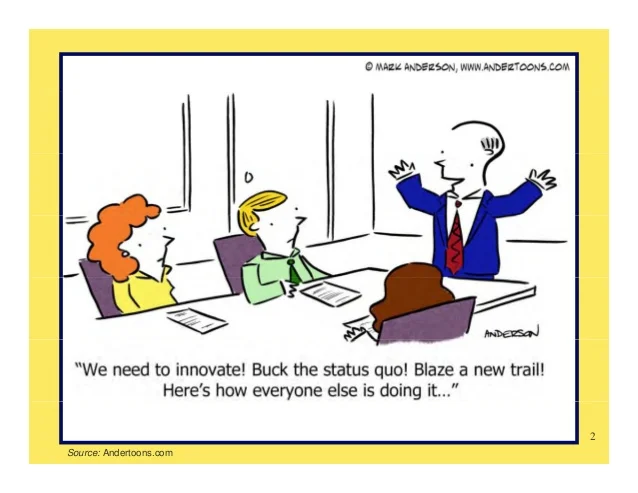Building an Innovative Culture
Competitive and strategic innovation is the pinnacle of successful executive leadership. Innovation creates new products, services, companies, and industries. Yet, innovation can seem as illusive as a Unicorn to organizations.
Some believe that small companies can modify the entire business quickly based on trends or competitors without the large number of employee, cultural, regulatory and legacy technology inhibitors of large companies.
However, large companies can be innovation machines. Over the last 20 years, IBM has obtained more US Patents every year than any other US company. By 2014, Bell Labs (aka Alcatel-Lucent and as of 2015, Nokia Bell Labs) had 29,002 patents. In 1973, Motorola was a radio & TV manufacturer but demonstrated the first mobile telephone based on technology from AT&T, who happened to be focusing on car phones. Motorola was a huge global company in 1973 with 14,000 employees and $1.43 Billion in revenue (that would be approximately $7.7 billion today). Similar to AT&T spinning off Bell Labs in 1996 to form Lucent, Motorola split into two companies (Mobility and Solutions) with the Mobility business becoming part of Lenovo in 2014.
Motorola – a brief history: In 1960, it introduced the world's first large-screen portable (19-inch), transistorized, cordless television. According to the 1962 Illinois Manufacturers Directory (50th anniversary edition), Motorola had 14,000 employees worldwide of which at least 5,823 employees in 6 plants were located in Illinois. The company headquarters were at 9401 West Grand Avenue in Franklin Park and it listed TV receivers, Stereo-Hi Fi equipment as the products at this plant made by 1,700 employees. The Communications Division was in Chicago at 4545 West Augusta Blvd. where 2,000 employees made electronic communications equipment. The Military Electronics Division was at 1450 North Cicero Avenue, Chicago where 923 employees made microwave and industrial equipment. Two more Chicago locations were listed at 4900 West Flourney Street and at 650 North Pulaski but no employee count was listed for these. The last plant was listed in Quincy, Illinois at 1400 North 30th Street where 1,200 employees made radio assemblies for both home and automobile.
Motorola Solutions is now only a $3.6 billion business or less than half as big as it was in 1973.
This article will propose how to stop innovation devastation and introduce how to increase the innovative nature of your business, enhance employee passion and commitment, fuel growth in diversity of products and customers, and organically transform your company.
Innovation Destruction
Companies do not intentionally decide to become stagnant. As highlighted by Henry Doss in the Forbes article, Why Big Business Fails At Innovation, published on January 12, 2015, anyone might think that the following would drive innovation out of a company:
Risk Mitigation
Shackled by legacy technology
Regulatory constraints
No motivation to pursue game changing products or services
However, Mr. Doss’ article goes further into a more realistic root cause after debunking the speculative drivers. As you may suspect, and as both the article and our experiences share, culture is the challenge to innovation and not specific business functional accountabilities.
Reducing Risk
Reducing corporate risk for shareholders includes ensuring products and services do not harm customers or the environment. Risk reduction activities are designed to reduce the possibility that a company does not violate laws or social norms. Assessing risk takes time and money. The extended time and reduced money available, both negatively impact what can be released to customers in any given year.
Need for Greater Revenue
The flurry of new ideas getting varying levels of attention at a startup that evolves to a focus on improving the profitability of each big hit as the company matures also drives subtle cultural changes. Innovative ideas on new products or markets are increasingly identified as higher risk and lower Return on Investment (ROI). These ideas start to go through more scrutiny or additional levels of management approval. By design, this slows down the process of innovation. People that come up with the ideas in smaller companies are often not as experienced in navigating risk mitigation or management approval processes as leaders of a high production businesses that might come in as “seasoned management”. So, creative or innovative people often get frustrated and leave.
By definition, innovators try to get a product or service working regardless of looks, complexity, or costs. Quality and repeatability are often left to an operating team. Innovators are not concerned with product recalls but management absolutely focuses attention on risk reduction by providing regulatory oversight to reduce recalls, bad publicity, or legal consequences. Hence, the efficiency evolution of solutions and products to improve profitability directly impact the environment and culture initially created to come up with those very solutions and products that drove the company’s initial growth.
What to avoid
Mal Sanders calls out in the article; 4 reasons why companies fail to innovate, published on March 8 in 2017, the following reasons why companies fall into an innovation trap.
Companies are designed to resist change
People are incentivized to keep the status quo
P&L focused CEO’s
The criteria on which decisions are made
Consider that if a startup company develops something people want, they have to scale up, pay taxes and employees, encourage people to join their team and drive new business. All of these things must be done efficiently as to not cost too much money and drive the business into bankruptcy. So, organizational structures and processes tend to fall into place. Financial rules are established. Legal and compliance become a bigger concern. And then there are taxes and more taxes that have to be paid and with employees, these taxes become complex in both tracking and paying monthly. As highlighted in both articles, all normal business activities associated with growth inhibit future innovation.
How to Re-create an Innovative Culture
The good news is that innovation does not have to be magical or mystical. Innovation is a combination of the individual desire to make positive change, a structured process, and the accepting and nurturing business architecture and design, i.e., culture, to support and develop the individual desire.
Stopping Innovation is easy….
Structure processes come in to play to help creative people navigate the organization quickly and to help explain to them the reasons for certain actions and steps. Helping to explain why companies do things helps employees understand both the temporal and financial requirements to set the expectations of how fast an innovative idea can mature and what is required. Also important is the reasoning behind the process(s), which could be safety, regulatory, or simply financial risk. Innovative people can often come up with reasonable yet innovative solutions to accelerate ideas as well.
An accepting and nurturing culture may sound like something you don’t want to have in business since it could interfere with the competitive nature of capitalism. However, within a company, a culture that encourages employees to take calculated and controlled risks help a company improve outcomes. Setting up boundaries and oversight to make sure ideas fit within the company’s mission and vision helps to quickly identify if the idea should be moved past the initial concept. Knowing where to go and how much funding an idea may get is critical for employee(s) to know what they have to work with inside the company. Many ideas in companies are worked on outside of normal business hours and explain why more employees are asked to sign employment agreements that state any and all inventions by employees belong to the company. Businesses are coming to the understanding that employees will work on ideas outside of the company if the business does not support them. So, why not support them with a culture that is open to ideas and a structure that is clear for employees to follow?
ENKI, LLC has helped organizations identify their innovation limitations and implement evolving changes with their own employees to improve employee participation in the idea generation stage of new product development. We have helped organizations adjust their culture based on employee feedback to increase the employee engagement and excitement about proposing new ideas and customer solutions. We have even helped companies understand the benefit of funding spinouts and building employee engagement in innovation.
We have walked in your shoes and know what it takes to be successful.
ENKI, LLC is your Success Unlocked.




